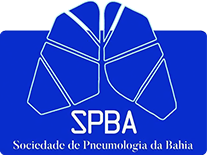Abstract: Altered smell is one of the most prevalent symptoms in acute COVID-19 infection. Although most patients recover normal neurosensory function in a few weeks, approximately one-tenth of patients report long-term smell dysfunction, including anosmia, hyposmia, parosmia and phantosmia, with a particularly notable impact on quality of life. In this complex scenario, inflammation and cellular damage may play a key role in the pathogenesis of olfactory dysfunctions and may affect olfactory signaling from the peripheral to the central nervous system. Appropriate management of smell disturbances in COVID-19 patients must focus on the underlying mechanisms and the assessment of neurosensorial pathways. This article aims to review the aspects of olfactory impairment,
including its pathophysiology, epidemiology, and clinical management in post-acute COVID-19 syndrome (PACS).
- A SPBA
- Comissões científicas
-
Pneumologistas
- Localize um pneumologista
- Seja um afiliado
Pneumologistas -
Destaques
- Fibrose Cística
- HEOM
- Hospital do Torax
- HUPES
- ProAR
Destaques -
Ensino e pesquisa
- Edital de vagas
-
Residência médica
- Hospital Santa Izabel
Residência médica
Ensino e pesquisa - Utilitários
-
Publicações
- Noticias
- SPBA na Mídia
- Temas em destaque
Publicações - Agenda
- Galeria
- Vídeos
- Links Úteis
- Parcerias
- Contato
- A SPBA
- Comissões científicas
- Pneumologistas
- Destaques
-
Ensino e pesquisa
- Edital de vagas
- Residência médica
- Utilitários
- Publicações


